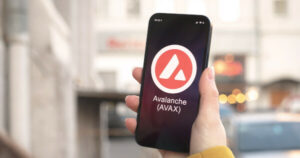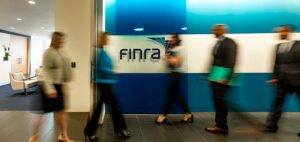Tesla CEO Elon Musk is pictured during a visit at the company’s electric car plant in Gruenheide near Berlin, eastern Germany, on March 13, 2024, as employees resumed work after production had to be halted due to a suspected arson attack that caused a power outage.
Odd Andersen | AFP | Getty Images
By just about every measure, Tesla’s first-quarter earnings report on Tuesday was dreary. The company missed estimates on the top and bottom lines. Revenue fell by 9% year over year, the worst decline since 2012. Auto sales dropped 13% from the same period in 2023. Free cash flow turned negative.
But CEO Elon Musk downplayed most of that and suggested investors focus their attention elsewhere.
Rather than dwell on quarterly financials or the massive restructuring announced last week, Musk reiterated his vision of Tesla as a company that’s building artificial intelligence software to turn existing cars into self-driving vehicles, dedicated robotaxis that will make money for their owners and a driverless transportation network.
This is the Tesla Musk is selling to Wall Street, and he’s telling anyone with doubts to stay away.
“If somebody doesn’t believe Tesla’s going to solve autonomy, I think they should not be an investor in the company,” Musk said on the earnings call. He added, “We will, and we are.”
Tesla shares soared 13% in extended trading Tuesday after the earnings report, despite the disappointing results. Some of the optimism was tied to Tesla’s announced plans to start production of new affordable electric vehicle models in “early 2025, if not late this year.”
The stock’s rally picked up steam during the earnings call as Musk veered to the future. He casually mentioned that the company’s robotaxi, which he has long said is coming, will be called the CyberCab. In a shareholder deck that Tesla published before the call, the company featured a “preview of ride-hailing in the Tesla app.”
Musk also talked up a driverless network that’s like Uber with Tesla autonomous vehicles.
“When the car is not moving,” Musk said, “there’s potential to actually run distributed inference,” through the hardware that’s in the cars.
Musk has been making these kinds of pronouncements for years.
In 2015, Musk told shareholders that Tesla cars would achieve “full autonomy” within three years. They didn’t. In 2016, Musk said a Tesla car would be able to make a cross-country drive without requiring any human intervention before the end of 2017. That hasn’t happened either.
And in 2019, on a call with institutional investors that would help him raise more than $2 billion, Musk said Tesla would have 1 million robotaxi-ready vehicles on the road in 2020, able to complete 100 hours of driving work per week each, making money for their owners.
The robotaxis would make Tesla a company worth $500 billion, he said at that time. Tesla’s market cap is around that mark now and even topped $1 trillion in 2021, but the company has never managed to deliver on its driverless promises.
NBC News reported recently that the company hasn’t even sought permits that would allow it to test and operate robotaxis in three states, including California and Nevada, where it employs thousands of people.
Separately, the California Department of Motor Vehicles has filed a legal complaint against Tesla, saying it engaged in false advertising and marketing concerning its driver assistance systems — Autopilot and Full Self-Driving (FSD) systems. Autopilot is the standard, and FSD costs $99 per month or $8,000 upfront. Both require human drivers at the wheel, ready to steer or brake at any time. Tesla is defending itself in court against the accusations.
‘More valuable than everything else’
On the earnings call, Musk said he believes FSD will soon be ready to expand geographically to China pending regulatory approval. He didn’t mention the California regulator’s lawsuit.
Musk said people who haven’t tried Tesla’s latest FSD updates “really don’t understand what’s going on.”
His bluster isn’t limited to cars.
At an AI Day in August 2021, Musk said Tesla would build a humanoid robot, now known as Optimus. The company didn’t have a hardware prototype to show at the time, so an actor dressed in a spandex bodysuit danced onstage in its place. In 2022, Tesla unveiled its hardware prototype of Optimus.
On Tuesday, Musk said Optimus is already capable of doing some unspecified factory tasks.
A mockup of Tesla Inc.’s planned humanoid robot Optimus on display during the Seoul Mobility Show in Goyang, South Korea, on Thursday, March 30, 2023. The motor show will continue through April 9. Photographer: SeongJoon Cho/Bloomberg via Getty Images
Bloomberg | Bloomberg | Getty Images
“We may be able to sell it externally by the end of next year,” he said. “Optimus will be more valuable than everything else combined because if you’ve got a sentient humanoid robot that is able to navigate reality and do tasks at request, there is no meaningful limit to the size of the economy.”
Whether all of these capital-intensive and far-out projects belong at Tesla is a question that many investors and analysts are asking.
Musk owns a 20.5% stake in Tesla, more than 715 million shares, as of March 31, according to the company’s recent proxy filing. He’s used around 238.4 million of those shares as collateral to secure personal debt. In January, he began angling for even more control of Tesla.
“I am uncomfortable growing Tesla to be a leader in AI & robotics without having ~25% voting control,” he wrote in a post on X. “Enough to be influential, but not so much that I can’t be overturned.”
Musk created a new startup, xAI, to develop AI products to rival those from Microsoft-backed OpenAI. Before starting xAI, he was already serving as CEO of Tesla and SpaceX, and was technology chief at X, which he owns. He’s also the founder of brain computer interface company Neuralink and tunneling venture The Boring Co.
Alex Potter, an analyst at Piper Sandler, asked Musk on the earnings call if he’d “come up with any mechanism” to ensure he would have the requisite level of voting control at Tesla because, if not, “the core part of the thesis could be at risk.”
“No matter what, even if I got kidnapped by aliens tomorrow, Tesla will solve autonomy, maybe a little slower but it would solve autonomy for vehicles at least,” Musk said. “I don’t know if it would win with respect to Optimus, or with respect to future products, but there’s enough momentum for Tesla to solve autonomy, even if I disappeared, for vehicles.”
But he was quick to tell investors that the company needs him to achieve his loftiest goals.
“If we have a super sentient humanoid robot that can follow you indoors, and that you can’t escape, we’re talking Terminator-level risk yeah I’d be uncomfortable if there’s not some meaningful level of influence over how that is deployed,” he said.








